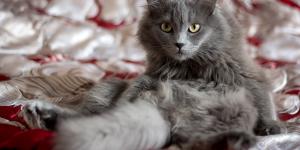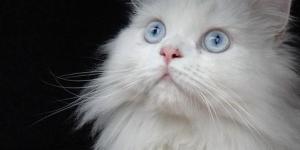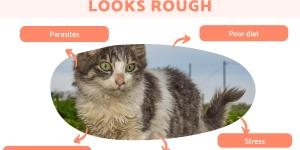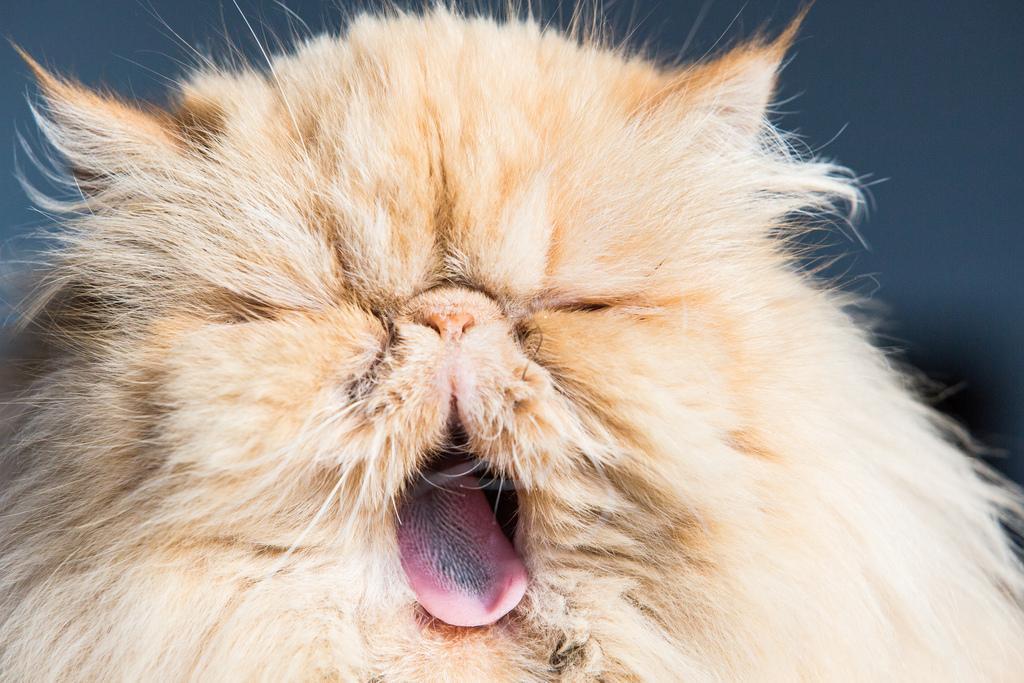How to Get Mats Out of a Persian Cat's Hair



Animal file: Persian Cat
Removing mats from a Persian cat's fur is more common than most other breeds due to their long hair. Although it is one of the reason Persian cats are so popular, their long hair can become problematic for many reasons. For the guardian, the hair that is left around the home can be a hygiene issue. This is especially so during the molting season. For the cat, they run the risk of ingestion of hairballs. This is why regular brushing is so important, especially for Persian cats. If we do not brush, they also face the problem of hair mats. These are not just aesthetically problematic, but they can also cause problems for the cat.
At AnimalWised, we find out how to get mats out of a Persian cat's hair. We also understand why Persians are prone to getting mats, what brushes are best for Persian cat grooming and how we can prevent mats from developing in the future.
Why do Persian cats get mats in their hair?
Mats in cat hair are tangled and knotted clumps of fur that form when loose hairs become interwoven and compacted. They can range in size from small knots to larger, dense clumps that are difficult to comb through. Mats can occur in any cat breed but are more common in long-haired cats, such as Persian, Maine Coon and Ragdoll cat breeds. This is due to their abundant and dense fur.
It is not only length and density than can contribute to knots and tangles in a cat's fur. Felines like the Persian cat are more prone to getting mats in their hair due to several specific factors related to their breed and coat characteristics, as well as their individual behavior:
- Long and dense Fur: Persian cats have long, luxurious fur that is dense and abundant. This type of fur is more likely to trap loose hairs and become tangled, increasing the risk of mat formation.
- Minimal self-grooming: unlike some other cat breeds, Persian cats are not as diligent in self-grooming. Their long fur requires regular and thorough grooming to prevent mats from forming, but Persians may not always groom themselves adequately to keep their coat knot-free. This can be especially so with peke-face Persians, a type of Persian cat with a flat face.
- Undercoat shedding: Persian cats have an undercoat, which is the softer, finer fur that grows beneath the outer coat. Undercoat shedding is common in Persians. If the loose undercoat hairs are not removed through grooming, they can contribute to matting.
- Sensitive areas: Persians have areas on their bodies that are more prone to matting, such as behind the ears, under the armpits and around the belly. These areas experience more friction and can easily trap loose hairs, leading to mats.
- Grooming challenges: due to their long fur and sensitive nature, grooming a Persian cat can be more time-consuming and challenging than grooming short-haired breeds. Regular grooming is essential to prevent mats, but it may require more effort and patience with a Persian cat.
- Outdoor exposure: if a Persian cat spends time outdoors, exposure to moisture, dirt and other material can exacerbate mat formation in their fur.
Peke-face Persians are a type of cat with a flat face. This is due to a condition called brachycephaly. Brachycephalic cat breeds can still groom themselves, the shape of their face can make it more difficult to reach certain areas. This can contribute to knots and tangles.
What problems can mats in a Persian cat's hair cause?
Discomfort and Pain: Mats are tangled and knotted clumps of fur that can pull and tug on the cat's skin. As the mats become tighter, they can cause discomfort and even pain for the cat. Mats may lead to skin irritation, redness, and sore spots, making grooming an uncomfortable experience for the cat.
- Difficulty in movement: severe mats can restrict a Persian cat's movement, especially in areas where mats form close to joints. This limitation in mobility can affect the cat's ability to walk, jump and engage in normal activities, leading to a decrease in overall quality of life. If this happens to a Persian cat in our home, it means we are not meeting our responsibility of care.
- Hygiene issues: mats in a Persian cat's fur can trap dirt, debris and moisture close to the skin. This trapped material can create an ideal environment for bacteria and fungi to thrive, potentially leading to skin infections and unpleasant odors.
- Overheating: Persian cats have a thick and luxurious coat, which can provide warmth in colder climates. When mats are present, they can trap heat and prevent proper air circulation. This can lead to the cat overheating in warmer weather or indoor environments with central heating.
- Increased shedding: matted fur can cause a cat's coat to become less healthy, leading to increased shedding. The fur may break off or be pulled out when attempting to remove mats, exacerbating the shedding problem.
- Grooming difficulties: Persian cats require regular grooming due to their long fur. Mats can make grooming sessions more challenging and time-consuming for both the cat and the owner. Mats may also be painful to remove, leading to resistance and stress during grooming sessions.
To prevent mats from forming and to maintain a healthy coat, regular grooming is essential for Persian cats. Regular brushing helps to remove loose hair, prevent tangles and reduce the likelihood of mats forming. For Persian cats with particularly long and dense fur, professional grooming may be necessary to keep their coat in optimal condition.

Removing knots and tangles step by step
It is very important to follow the advice on caring for a Persian cat's coat to keep it soft and tangle-free. As we have stated above, a Persian cat may not groom themselves as thoroughly as other cats. Especially since they have longhair, we will need to groom our Persian cat regularly to remove mats and knots from their coat.
You will need:
- Comb or brush for long-haired cats
- Dry conditioner.
Removing knots and tangles from a Persian cat's coat
Especially if it is the first time you're doing this, you should know that cats are very special animals that won't always let you do what you want. Try to make intensive brushing a positive experience by giving treats to your cat so they relax. We will need to be careful to cause the least possible pain. Sometimes it is helpful to have someone else hold the cat and provide reassurance while grooming.
- While stroking them, start to feel all over their coat without hurting them. The idea is to look for possible mats in your Persian cat's coat and identify the size of the knots.
- Apply dry conditioner on top of each knot and tangle and follow the product instructions. Let it act for the recommended time; the cat's fur will be softer and easier to manage.
- Carefully brush the animal's fur with the comb. This is the trickiest part, because cats don't usually tolerate their hair being pulled. Try to irritate your pet as little as possible.
- Start combing the outermost layer of the tangle. Never try to undo it from the inside. Pay attention to the direction of the fur so that you know which way to brush.
- It might be the case that you manage to undo part of the knot, but the interior, which is much drier, remains tangled. Reapply the conditioner.
At this point you should be able to remove the tangle in your Persian cat's coat without any problem. However, if you see that it is too tangled go to the next step.
Should you cut away the knot or tangle?
If your cat's knots or tangles are impossible to brush, you'll have to cut them out. If you do it properly and carefully you can do it yourself at home, although if you're a little afraid to do so you can go to a professional cat groomer.
You will need:
- Brush for long-haired cats
- Scissors
- Electric razor
Cutting a mat out of a Persian cat's coat
- If your cat has a single knot or the tangles are spread apart from one another, you can use the scissors. Start feeling the knot that you need to cut out to determine how far it is from the skin, and calculate what you're going to do.
- Find someone who can help. If your cat squirms a lot, using scissors can be very dangerous.
- Start cutting gradually. It's better to cut off less fur than end up hurting the poor animal. Start at the surface of the tangle and work inwards until the knot is practically cut out.
- Use a comb if you see that the knot can now be easily untangled.
- If you have a knot which is too close to the skin, you can use an appropriate electric shaver. Find someone who knows how to use this instrument. Even if you think it's easy, if you haven't done it before you could hurt your cat.
- Carefully shave off the knotted areas with the help of another person.
Now that you've managed to get rid of the knots in your cat's fur, you need to learn how to prevent your Persian cat's coat from becoming tangled again. It is important to note that shaving a knot out of a cat's fur is not the same as shaving their entire coat. Learn more with our article on whether we should give our cat a haircut.
What is the best brush for grooming Persian cats?
Grooming a Persian cat's coat requires the right tools to keep their long and luxurious fur in optimal condition. Here are some of the best brushes for grooming a Persian cat's coat:
- Steel comb with wide teeth: a steel comb with wide teeth is an essential tool for detangling and removing mats from a Persian cat's fur. The wide teeth help to gently untangle knots without causing discomfort to the cat.
- Slicker brush: a slicker brush is designed to remove loose fur, dirt, and debris from the coat. It has fine wire bristles that are effective in reaching the undercoat, which is particularly useful for Persian cats with thicker fur.
- Bristle brush: a soft bristle brush can be used for regular brushing to keep the coat smooth and free of loose hairs. It is especially helpful in distributing natural oils throughout the fur for a healthy and shiny coat.
- Dematting comb or tool: a dematting comb or tool is specifically designed to safely remove mats from a cat's fur. It features sharp blades or edges that can cut through the mats, making them easier to brush out. However, caution should be exercised while using these tools to avoid harming the cat's skin.
- Undercoat rake: an undercoat rake is useful for removing loose undercoat fur in Persian cats. It reaches deep into the coat to eliminate excess hair and prevent matting.
- Grooming gloves: grooming gloves can be an excellent alternative for cats who may be sensitive to traditional brushes. These gloves have soft rubber or silicone bristles that can effectively remove loose fur while providing a gentle massage.
When grooming a Persian cat, it's essential to choose brushes with soft and gentle bristles to avoid irritating their sensitive skin. Regular grooming sessions, ideally two to three times a week, can help prevent mats and keep the coat healthy and tangle-free.

How to prevent mats in a Persian cat's coat
To prevent any knots from reappearing in your Persian cat's coat you need to brush and bathe them regularly. Please note that not all products are suitable for your particular situation.
Of course, you should only use cat-specific shampoo and conditioner. There are products with very particular characteristics, such as those designed for white cats, those that provide extra softness or give the coat an intense shine. Keep an eye out for the best option for your cat!
Bathe your Persian cat once every two to three months to prevent dirt building up and causing tangles in their beautiful coat. Here you can find a step by step guide on bathing a Persian cat.
Although it would be useful to have three types of brush - comb, brush and slicker brush - and to know how to use them properly, you can make do with a wire brush with protected tips. Brush your Persian cat's coat daily to keep it healthy and tangle-free. Don't forget any part of their body, and do it carefully and gently.

If you want to read similar articles to How to Get Mats Out of a Persian Cat's Hair, we recommend you visit our Beauty tips category.






 Which breed does my cat belong to.
Which breed does my cat belong to.


 Hi, can you please kindly inform me of which breed my cat belongs to?
Hi, can you please kindly inform me of which breed my cat belongs to?
 Also wanna know what is this kitten breed? Thanks
Also wanna know what is this kitten breed? Thanks


